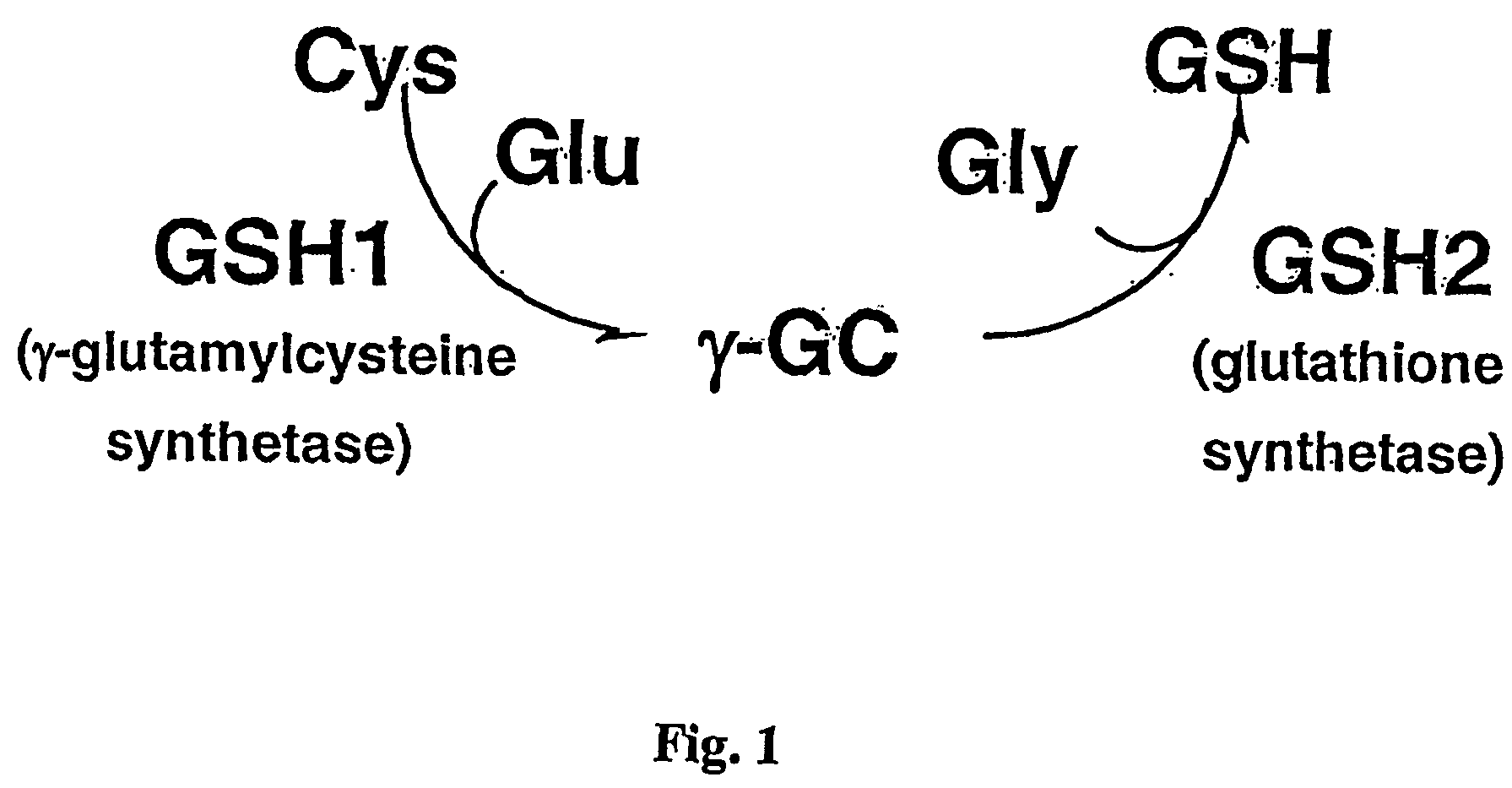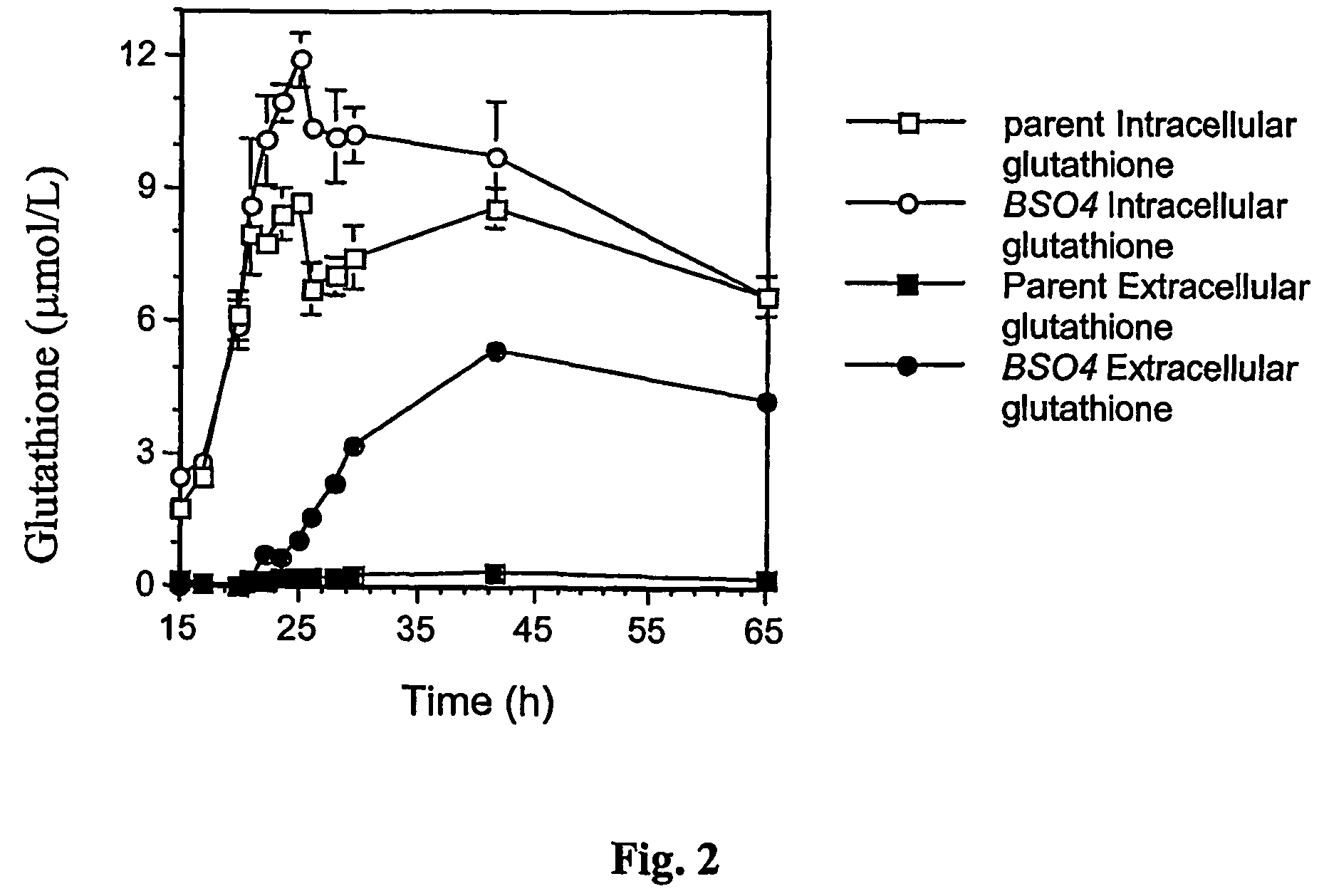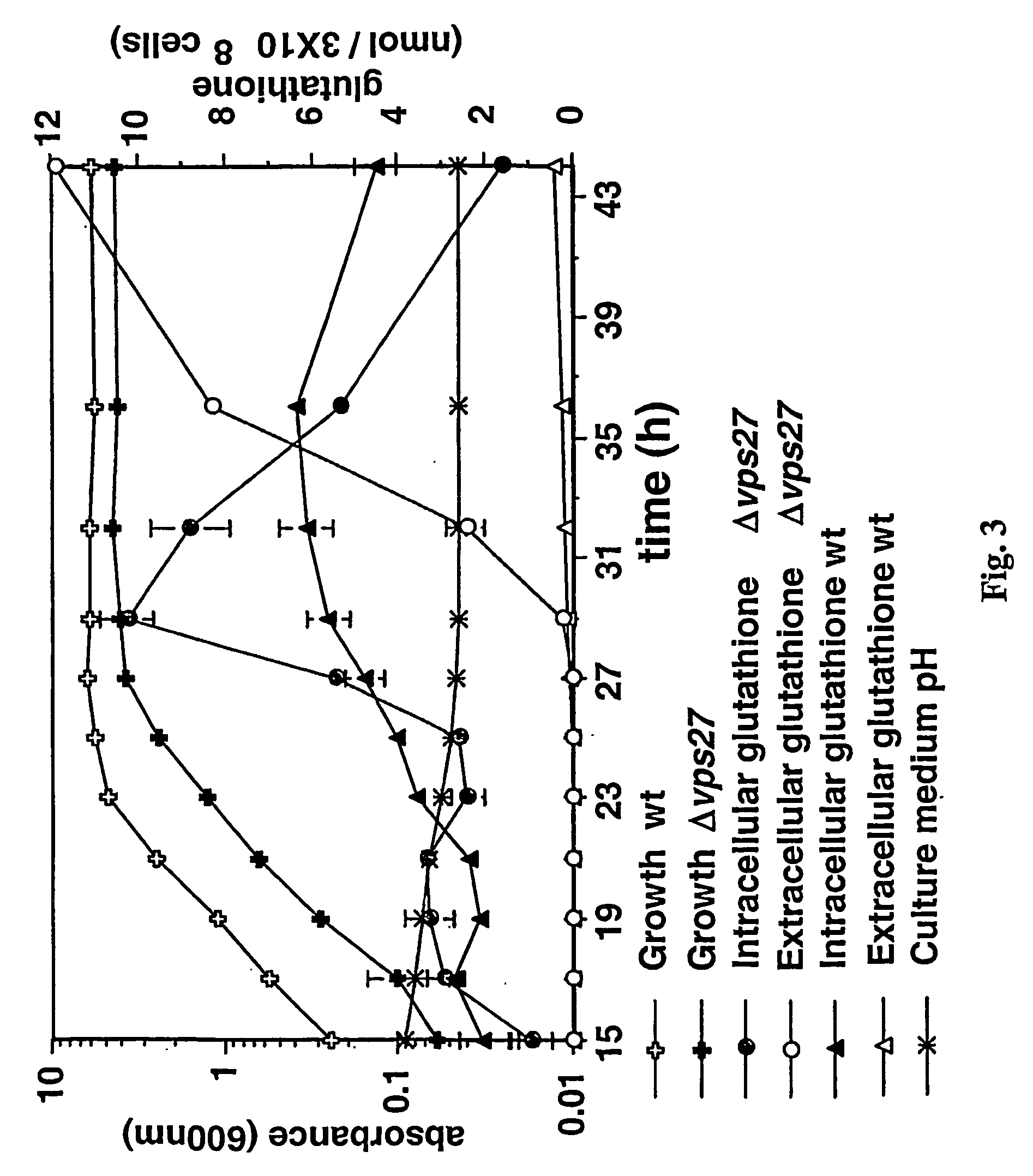Glutathione production
- Summary
- Abstract
- Description
- Claims
- Application Information
AI Technical Summary
Benefits of technology
Problems solved by technology
Method used
Image
Examples
example 1
Identification of Yeast Mutants for Glutathione Production
[0220] A deletion library of yeast strains derived from yeast strain BY4743, and as described in Winzeler E. A. et al., (1999), Science 285: 901-906 was purchased from EUROSCARF Saccharomyces cerevisiae (www.rz.unifrankfurt.de / FB / fbl6 / mikro / euroscarf). According to the Winzeler E. A. et al reference, these mutants are deletion strains according to the following procedure: two long oligonucleotide primers are synthesized, each containing (3 [prime] to 5 [prime]) 18 or 19 bases of homology to the antibiotic resistance cassette, KanMX4 (U1, D1), a unique 20-bp tag sequence, an 18-bp tag priming site (U2 or D2), and 18 bases of sequence complementary to the region upstream or downstream of the yeast ORF being targeted (including the start codon or stop codon; see http: / / sequence-www.stanford.edu / group / yeast / yeast_deletion_project / new_deletion strategy.html). These 74-mers are used to amplify the heterologous KanMX4 module, which...
example 2
Glutathione Production (Extracellular and Intracellular) Relative to Growth Phase
[0256] The strain designated as BSO4 was grown as per Example 1, but intracellular and extracellular glutathione levels were determined at a number of timed intervals after inoculation into fresh medium. The parental strain was also grown and sampled in the same way.
[0257] The results are illustrated in FIG. 2.
[0258] A mutant having a deletion in the VPS27 gene was grown as per Example 1, but intracellular and extracellular glutathione levels were determined at 15, 17, 19, 21, 23, 25, 27, 29, 32, 36 and 44 hours after inoculation into fresh medium. The parental strain was also grown and sampled in the same way.
[0259] The results are illustrated in FIG. 3.
example 3
Glutathione Production (Extracellular and Intracellular) Relative to pH
[0260] Several of the above mentioned strains from the BY4743 series were grown as follows.
[0261] Growth medium: As per SD minimal medium as described in Example 1, except the pH of the growth medium was buffered using a 25 mM PIPPS / MES buffer system (PIPPS=piperazine-N,N′-bis(2-ethanesulfonic acid) MES=2(N-morpholino)ethane sulfonic acid). The pH of the medium was adjusted to either pH 3.5 or pH 6.0 via the addition of ammonium hydroxide, or even a range of pH values were tested for strain BSO4.
[0262] Growth conditions and quantification of glutathione: The method used was identical to that outlined for the screening of the BY4743 series of deletion mutants.
[0263] The results (illustrated in FIGS. 7 to 9) show that extracellular GSH accumulation is greater if the pH of the growth medium is buffered at pH 3.5 vs pH 6.0. The differences observed in extracellular glutathione were determined to not be due to pH ...
PUM
| Property | Measurement | Unit |
|---|---|---|
| Fraction | aaaaa | aaaaa |
| Molar density | aaaaa | aaaaa |
| Molar density | aaaaa | aaaaa |
Abstract
Description
Claims
Application Information
 Login to View More
Login to View More - R&D
- Intellectual Property
- Life Sciences
- Materials
- Tech Scout
- Unparalleled Data Quality
- Higher Quality Content
- 60% Fewer Hallucinations
Browse by: Latest US Patents, China's latest patents, Technical Efficacy Thesaurus, Application Domain, Technology Topic, Popular Technical Reports.
© 2025 PatSnap. All rights reserved.Legal|Privacy policy|Modern Slavery Act Transparency Statement|Sitemap|About US| Contact US: help@patsnap.com



